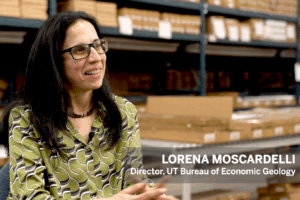AUSTIN, Texas—Researchers at The University of Texas at Austin have discovered the mechanism by which a key hormone called auxin regulates the growth and development of plants by promoting the degradation of repressor proteins. The discovery could eventually allow scientists to manipulate plant growth in desirable ways.
The researchers’ findings will be published in the Nov. 15 issue of the journal Nature.
Geneticists Dr. William M. Gray, a postdoctoral fellow, and Dr. Mark Estelle, both with The University of Texas at Austin’s Institute for Cellular and Molecular Biology, wrote the paper along with Dr. Stefan Kepinski, Dr. Dean Rouse and Dr. Ottoline Leyser of the Department of Biology at the University of York. Estelle is the D. J. Sibley Centennial Professor in Plant Molecular Genetics. Gray is lead author of the paper.
The auxin study was conducted on a plant called Arabidopsis, the first plant for which the entire genome has been sequenced. Previous studies had identified proteins involved in auxin’s regulation of many aspects of plant development. This is the first study to reveal how the mechanism actually works and to identify the specific complex of proteins that promotes degradation of the repressor proteins.
Auxin is required for plant growth, stimulating cell division and cell elongation. Among other things, auxin regulates lateral root formation and the direction in which plants grow, or gravitropism.
“It’s why roots go down and shoots go up,” Estelle said.
Estelle explained that auxin performs its functions by stimulating gene expression, that is, it turns genes on and off. “What we discovered is that the genes involved in these activities are normally off because there are proteins that act as repressors and prevent the genes from being turned on,” Estelle said.
Auxin allows these genes to perform their function by stimulating the degradation of the repressor proteins. Estelle said this is roughly similar to the action of a driver who allows the car to move forward by removing his foot from the brake. The discovery also involves identifying the specific complex of proteins that interact or bind with the repressor proteins and promote their degradation. This particular complex of proteins is similar to complexes of proteins found in all animals, plants and fungi, Estelle said.
Estelle said identifying these proteins is important because “understanding how auxin works may allow us to manipulate plant growth in desirable ways.”
Asked the next step for researchers, Estelle said: “We would like to identify the protein that directly interacts with auxin (the auxin receptor) and understand how this signal is transmitted to the protein degradation machinery.”
For more information, contact Dr. Mark Estelle at (512) 232-5559 or see his Web site.



